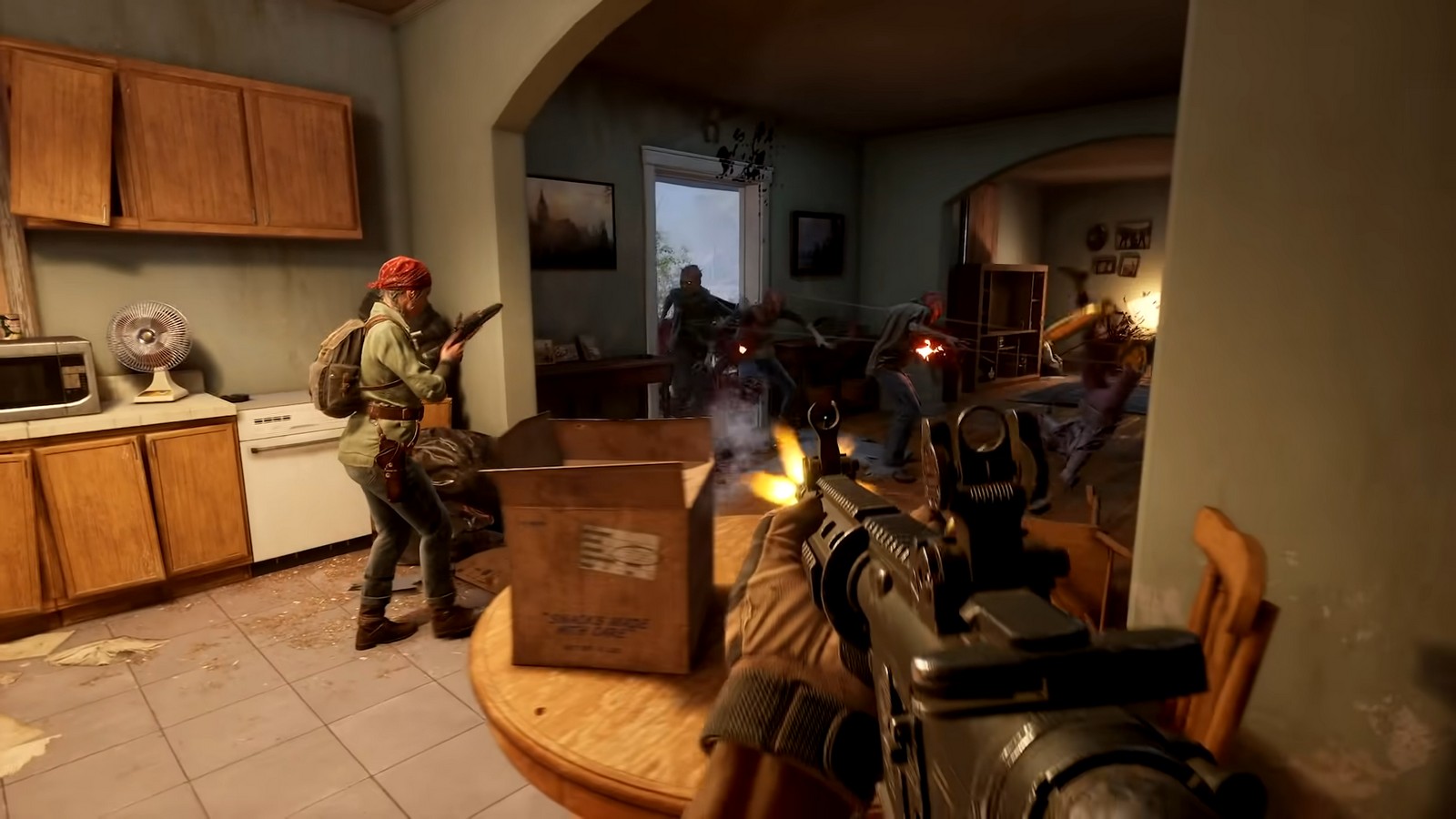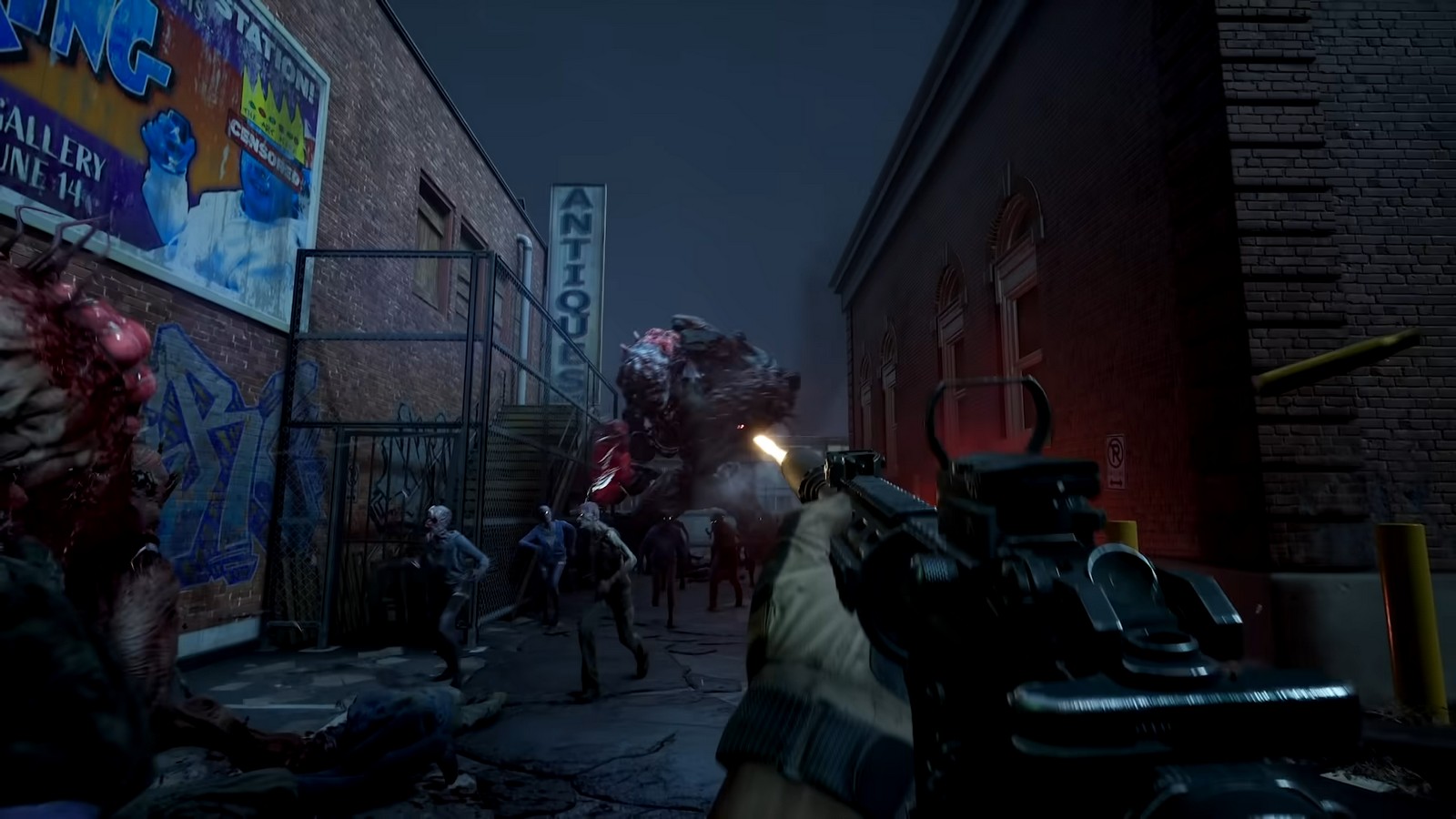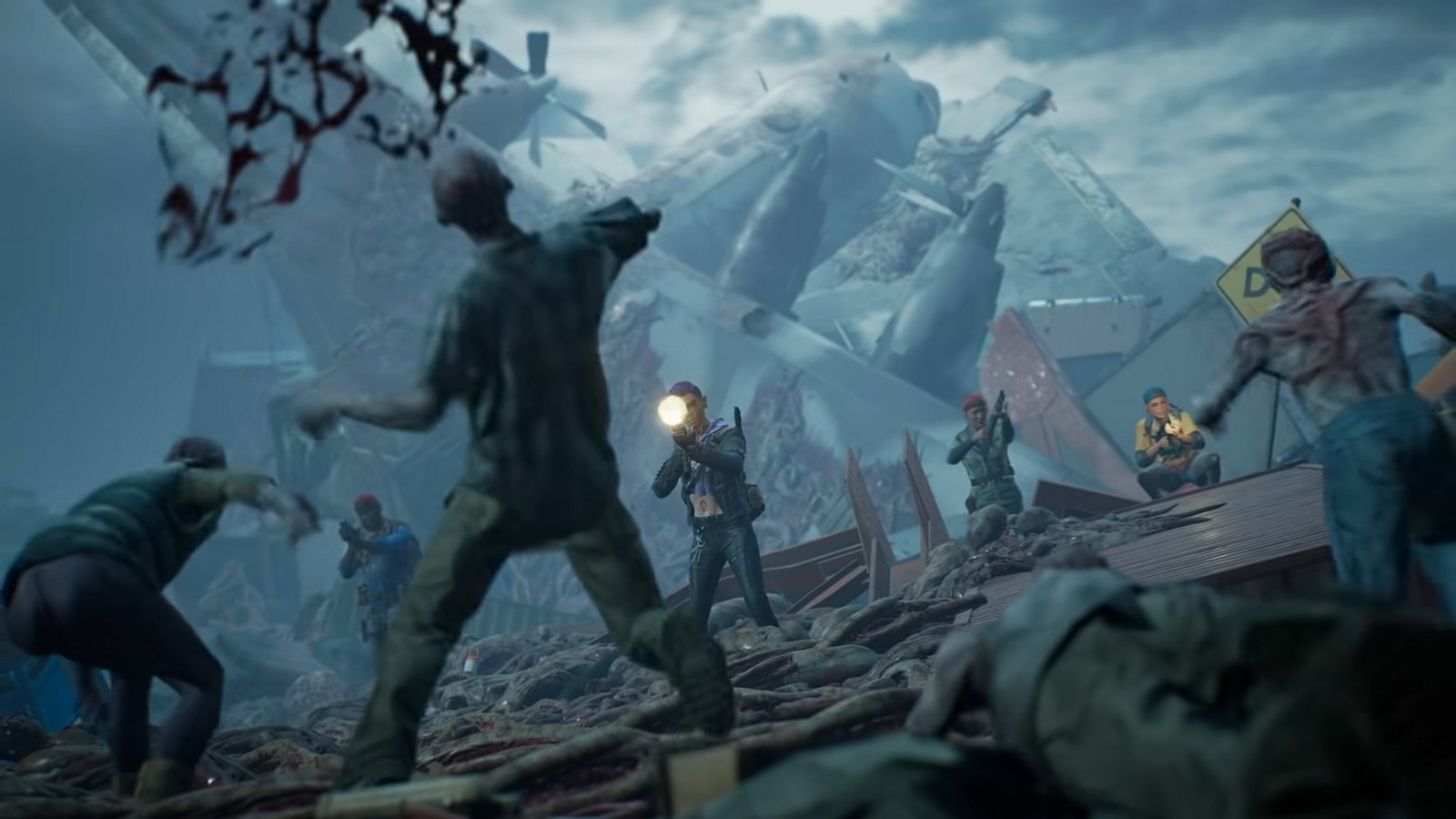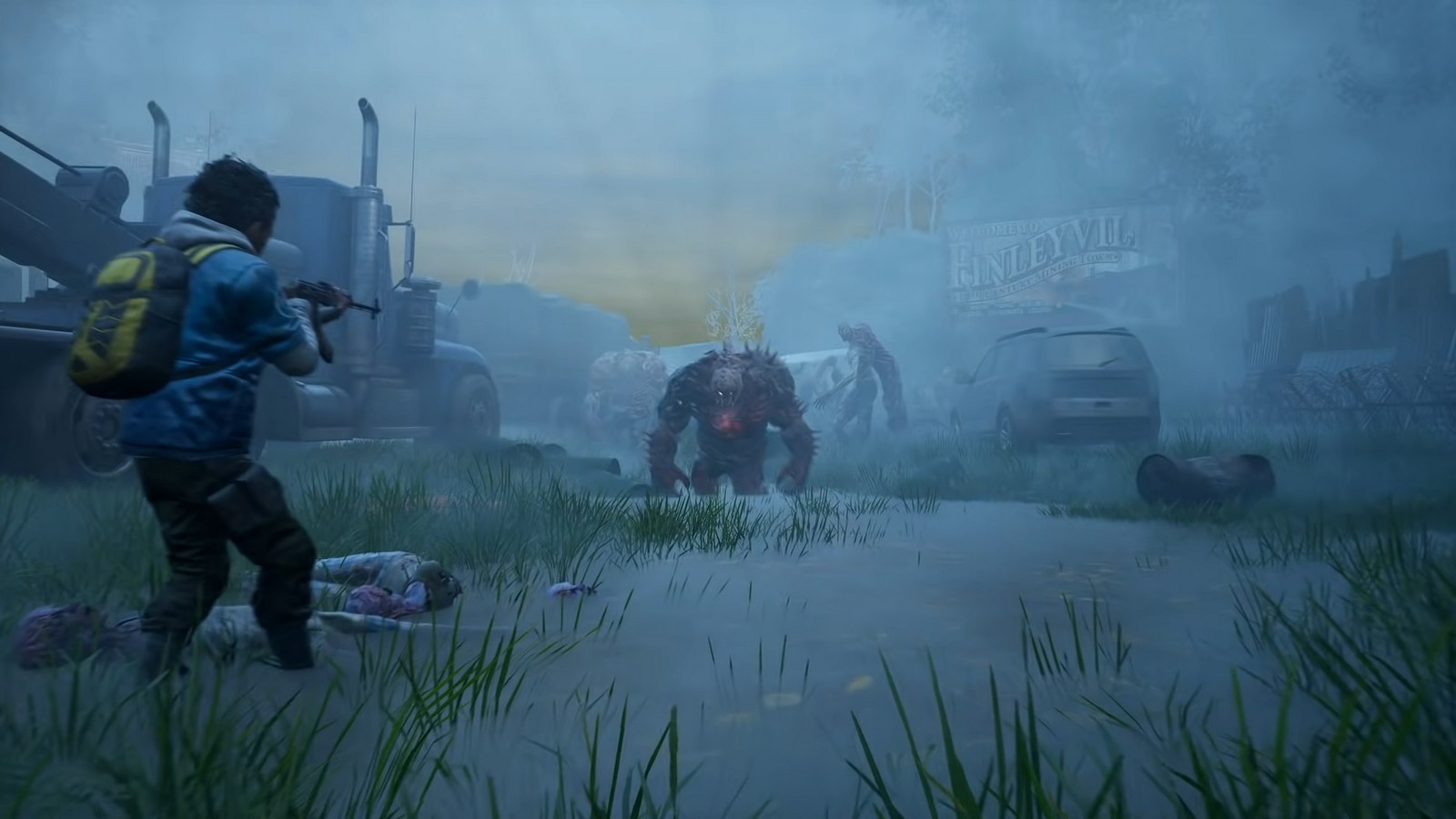'Back 4 Blood' Review: Back In The Saddle
We may receive a commission on purchases made from links.
Left 4 Dead has been left for dead by Valve, which led many fans to believe their dreams for four-player co-op zombie-killing campaigns may never shamble into the light of day. Fortunately, Turtle Rock Studios, the developer behind the original L4D, has gone back to that winning formula with Back 4 Blood.
Despite the immediate similarities, Back 4 Blood isn't just a Left 4 Dead clone with some modern sensibilities. Sure, there's the walking dead — called The Ridden this time around. And you do kill them by the truckload with melee weapons and firearms. However, there are enough changes and new gameplay elements to shake things up.
Back 4 Blood review: Story

Okay, there's some sort of story here, I swear. There's this parasite, and it turns those infected by it into the living dead. You play as a group called the Cleaners. This group bands together to fight the zombies and attempt to save the few humans that are still surviving.
Each of the eight playable Cleaners has their own background, and this influences their individual buffs and starting weapons. For example, the appropriately named Doc, can heal each teammate for 25 Health once per level, has +20% healing efficiency, and +25% Team Trauma Resistance.
For the most part, though, this isn't really a game that needs much story. There are cutscenes and all that. But for the most part, people are going to determine their favorite characters from their default buffs and weapons and not their sparkling personality.
Back 4 Blood review: Gameplay

Back 4 Blood's core gameplay, at least at first glance, is the same as that of its spiritual predecessor, Left 4 Dead. In the campaign mode, you and three other survivors (be it humans or bots) make your way through 33 levels killing Ridden and completing objectives. Some of these maps just require you to make it to the safe room. Others have you rescuing survivors, defending a location, carting items, and other goals.
One of the things that keeps Back 4 Blood engaging run after run is the Director. This AI essentially balances the game, increasing the difficulty when a group is doing well or easing it when the going gets rough. Unlike with Left 4 Dead, the Director in Back 4 Blood is more transparent with how it affects the party. The new card system includes Corruption Cards that are drawn at the beginning of each level. These can have minor effects like making everything foggy or more major ones like making more alarm doors appear throughout a level that can alert the horde.
Players also can make decks of cards to use in the campaign. There can be up to 15 cards per deck. Each bestows a certain benefit when drawn at the beginning of the level. This means players can create decks that synergize with a certain weapon type or focus around boosting a particular stat.
However, as of now, there does need to be some balancing with certain cards. For example, the Combat Knife card turns the regular melee into a Knife that can insta-kill a basic Ridden on the base difficulty. Combine that with Battle Lust which makes melee kills heal two health. And you can saw through regular zombies with abandon. This combo is too good to not equip, which means there's less incentive to experiment.
Additionally, I didn't enjoy the new Trama mechanic. As players take regular damage in Back 4 Blood, they also take trauma damage. Trauma damage lowers your max HP, which makes your character increasingly weaker as a campaign continues. You can heal from trauma by finding a first aid cabinet in a level, but regular healing items won't work. Trauma can be overly punishing (especially on higher difficulties), and it's pretty poorly explained in the game.
Back 4 Blood review: Difficulty

On the flip side, difficulty in Back 4 Blood needs to either be balanced or add a fourth.
Survivor, the easiest difficulty plays a lot like "normal." The game is a challenge during your first run. However, a group of seasoned players will quickly master Survivor and be ready to move up and earn more supply points so they can get cards and cosmetic unlocks more quickly.
The next difficulty mode is Veteran, and there is a massive spike here. Veteran is more like "very hard." Even those used to Survivor will find it hard to make it out of a level alive. The tougher mutated Ridden spawn like crazy here. The addition of friendly fire makes it a huge pain to take down hordes.
The highest difficulty, Nightmare, isn't even worth playing. Enemies have more health and can cause more damage, and players only have one life. This mode is only worth playing if you want to experience hulking undead brutes instant transmissioning behind you and hammer fisting your brains in before you can do anything about it.
Ideally, Turtle Rock Studios will update the game to include a difficulty between Survivor and Veteran because the spike between the two is going to be too much for many players to bear.
Back 4 Blood review: PvP

In addition to the co-op campaign, there's a PvP mode called Swarm. In Swarm, two teams of four take turns playing as either Cleaners or the Ridden.
Cleaners have one job here: Survive. On top of the player-controlled mutations, Cleaners have to fight off rounds of hordes. The higher the round, the bigger the horde, and it's inevitable that you'll die.
Meanwhile, it's the Ridden players' job to make sure the Cleaners go down fast. Each of the mutations available to play as will be familiar to Left 4 Dead players:
- Spitter > Stinger
- Boomer/Tank > Reeker
- Charger/Tank > Tallboy
Each of the mutations comes in subvarieties with different abilities that can be further upgraded with Mutation Points obtained during a match. Cleaners also get to bring their cards into Swarm and can make separate decks just for this mode.
The winner of Swarm is determined by which team lasts the longest as the Cleaners. Unfortunately, the mode features a lot of dead air with 45 seconds between rounds. If Turtle Rock can nail the pacing for this mode, it'd be a great partner for the co-op campaign. But the downtime might make some players feel antsy.
Back 4 Blood review: Weapons

One of the most important things to get right for a game like Back 4 Blood is the weapons. Players need to feel powerful but not so strong that the thrill of facing the horde gets diluted. For the most part, Back 4 Blood succeeds in this mission with a few exceptions.
Overall, the firearms are meaty, and even the base pistol will be a trusted companion throughout the campaign. Players get two slots. A primary weapon (like a rifle, submachine gun, LMG, sniper rifle, or shotgun) and a secondary weapon (pistol, sawed-off, melee weapon, or machine pistol) can be equipped. Firearms also have slots for attachments that you can find throughout levels.
The attachment system allows players to customize guns to their liking, but it's also poorly implemented. The biggest issue is that you can't detach attachments once they're equipped. So, you accidentally put an ACOG scope on your shotgun? Too bad, I hope you find another weapon you like soon.
Weapons and attachments also come in rarities that affect their states. Again, this works similarly to other games. All players have to remember is which color is better than the last. It's a stat thing, and their functionality doesn't change between rarities that I've noticed.
A peeve I have with attachments that most players probably won't care about is that some of them don't cause any cosmetic differences when equipped. It's kinda goofy when you throw a stock on a pistol. There are no changes to the model to indicate that.
Back 4 Blood review: Conclusions

Back 4 Blood is a worthy successor to Left 4 Dead's legacy and is sure to elicit smiles from fans of those iconic titles. Of course, it's not perfect. But if Turtle Rock Studios continues to update it, then it has the potential to be remembered just as fondly as its predecessors.
Despite its minor flaws, Back 4 Blood is extremely fun, especially with friends. Those looking for multiplayer fun will find few games that beat this out in 2021.
